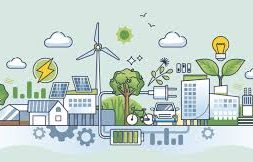
In Short : India’s renewable energy capacity, including large hydro, reached 48.3% of the total installed power mix by Q2 2025, totaling about 234.2 GW. This growth reflects steady progress toward the nation’s 2030 clean energy targets, with solar, wind, hydro, and other renewables playing a pivotal role in reducing reliance on fossil fuels and enhancing energy sustainability.
In Detail : India’s renewable energy capacity has reached a significant milestone in its power sector transformation. By the end of the second quarter of 2025, renewables, including large hydro, accounted for 48.3% of the country’s total installed power capacity. This achievement highlights the pace at which the clean energy sector is expanding nationwide.
The total installed renewable capacity now stands at approximately 234.2 GW. This includes contributions from solar, wind, biomass, small hydro, and large hydro projects, collectively forming nearly half of India’s power mix. The rapid addition of new capacity in recent years has been instrumental in achieving this share.
Solar power has been the leading contributor to this growth, supported by large-scale solar parks and rooftop installations under various government schemes. Wind energy projects, both onshore and offshore in development, continue to strengthen the renewable portfolio.
Large hydro projects also remain a key part of the mix, providing steady and dispatchable clean energy, which complements the variability of solar and wind power. These hydro resources are critical for maintaining grid stability as renewable penetration increases.
This progress brings India closer to its 2030 target of having 50% of its power capacity from non-fossil fuel sources. Achieving this milestone ahead of schedule would further strengthen India’s position in global climate leadership.
The renewable energy push is also reducing the country’s dependence on fossil fuels. Lower coal usage in the power sector has environmental benefits, including reduced greenhouse gas emissions and better air quality in urban and industrial regions.
Investments from both domestic and international players have fueled this expansion. Policy measures such as competitive bidding, production-linked incentives, and streamlined project approvals have created an enabling environment for growth.
Energy experts point out that the challenge now lies in integrating this growing share of renewables into the grid effectively. Storage solutions, transmission infrastructure upgrades, and smart grid technologies will play a vital role in ensuring reliability.
With nearly half of the power capacity already from clean sources, India is well on its way to achieving a greener, more sustainable energy system, while also meeting its climate commitments and supporting economic growth through green jobs and industries.












